(-)-Epigallocatechin gallate-loaded polycaprolactone scaffolds fabricated using a 3D integrated moulding method alleviate immune stress and induce neurogenesis
- PMID: 31746040
- PMCID: PMC6985678
- DOI: 10.1111/cpr.12730
(-)-Epigallocatechin gallate-loaded polycaprolactone scaffolds fabricated using a 3D integrated moulding method alleviate immune stress and induce neurogenesis
Abstract
Objectives: In peripheral neuropathy, the underlying mechanisms of nerve and muscle degeneration include chronic inflammation and oxidative stress in fibrotic tissues. (-)-Epigallocatechin gallate (EGCG) is a major, active component in green tea and may scavenge free radical oxygen and attenuate inflammation. Conservative treatments such as steroid injection only deal with early, asymptomatic, peripheral neuropathy. In contrast, neurolysis and nerve conduit implantation work effectively for treating advanced stages.
Materials and methods: An EGCG-loaded polycaprolactone (PCL) porous scaffold was fabricated using an integrated moulding method. We evaluated proliferative, oxidative and inflammatory activity of rat Schwann cells (RSCs) and rat skeletal muscle cells (RSMCs) cultured on different scaffolds in vitro. In a rat radiation injury model, we assessed the morphological, electrophysiological and functional performance of regenerated sciatic nerves and gastrocnemius muscles, as well as oxidative stress and inflammation state.
Results: RSCs and RSMCs exhibited higher proliferative, anti-oxidant and anti-inflammatory states in an EGCG/PCL scaffold. In vivo studies showed improved nerve and muscle recovery in the EGCG/PCL group, with increased nerve myelination and muscle fibre proliferation and reduced macrophage infiltration, lipid peroxidation, inflammation and oxidative stress indicators.
Conclusions: The EGCG-modified PCL porous nerve scaffold alleviates cellular oxidative stress and repairs peripheral nerve and muscle structure in rats. It attenuates oxidative stress and inflammation in vivo and may provide further insights into peripheral nerve repair in the future.
Keywords: (-)-epigallocatechin gallate; immune milieu; integrated moulding; nerve scaffold.
© 2019 The Authors. Cell Proliferation published by John Wiley & Sons Ltd.
Conflict of interest statement
The authors declare no conflict of interest.
Figures
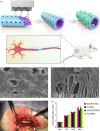

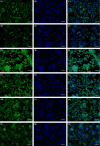
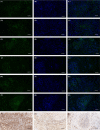
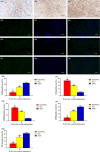
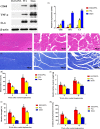
Similar articles
-
Possible role of antioxidative capacity of (-)-epigallocatechin-3-gallate treatment in morphological and neurobehavioral recovery after sciatic nerve crush injury.J Neurosurg Spine. 2017 Nov;27(5):593-613. doi: 10.3171/2016.10.SPINE16218. Epub 2017 Aug 4. J Neurosurg Spine. 2017. PMID: 28777065
-
A compound scaffold with uniform longitudinally oriented guidance cues and a porous sheath promotes peripheral nerve regeneration in vivo.Acta Biomater. 2018 Mar 1;68:223-236. doi: 10.1016/j.actbio.2017.12.010. Epub 2017 Dec 20. Acta Biomater. 2018. PMID: 29274478
-
3D melatonin nerve scaffold reduces oxidative stress and inflammation and increases autophagy in peripheral nerve regeneration.J Pineal Res. 2018 Nov;65(4):e12516. doi: 10.1111/jpi.12516. Epub 2018 Aug 3. J Pineal Res. 2018. PMID: 29935084
-
Epigallocatechin Gallate Modulates Muscle Homeostasis in Type 2 Diabetes and Obesity by Targeting Energetic and Redox Pathways: A Narrative Review.Int J Mol Sci. 2019 Jan 27;20(3):532. doi: 10.3390/ijms20030532. Int J Mol Sci. 2019. PMID: 30691224 Free PMC article. Review.
-
The recent progress of bone regeneration materials containing EGCG.J Mater Chem B. 2024 Oct 9;12(39):9835-9844. doi: 10.1039/d4tb00604f. J Mater Chem B. 2024. PMID: 39257355 Review.
Cited by
-
Biological and biocompatible characteristics of fullerenols nanomaterials for tissue engineering.Histol Histopathol. 2021 Jul;36(7):725-731. doi: 10.14670/HH-18-316. Epub 2021 Feb 19. Histol Histopathol. 2021. PMID: 33604882 Review.
-
Epigallocatechin-3-Gallate (EGCG), an Active Compound of Green Tea Attenuates Acute Lung Injury Regulating Macrophage Polarization and Krüpple-Like-Factor 4 (KLF4) Expression.Molecules. 2020 Jun 20;25(12):2853. doi: 10.3390/molecules25122853. Molecules. 2020. PMID: 32575718 Free PMC article.
-
Elimination of Induced Hypoxic Regions in Depth of 3D Porous Silk Scaffolds by the Introduction of Channel Configuration.Biomed Res Int. 2022 Mar 16;2022:9767687. doi: 10.1155/2022/9767687. eCollection 2022. Biomed Res Int. 2022. PMID: 35342757 Free PMC article.
-
Biomechanical microenvironment in peripheral nerve regeneration: from pathophysiological understanding to tissue engineering development.Theranostics. 2022 Jun 27;12(11):4993-5014. doi: 10.7150/thno.74571. eCollection 2022. Theranostics. 2022. PMID: 35836812 Free PMC article. Review.
-
Exogenous Antioxidants in Remyelination and Skeletal Muscle Recovery.Biomedicines. 2022 Oct 13;10(10):2557. doi: 10.3390/biomedicines10102557. Biomedicines. 2022. PMID: 36289819 Free PMC article. Review.
References
-
- Okuhara Y, Shinomiya R, Peng F, et al. Direct effect of radiation on the peripheral nerve in a rat model. J Plast Surg Hand Surg. 2014;48(4):276‐280. - PubMed
-
- Etminan M, Brophy JM, Samii A. Oral fluoroquinolone use and risk of peripheral neuropathy: a pharmacoepidemiologic study. Neurology. 2014;83(14):1261‐1263. - PubMed
-
- Alport AR, Sander HW. Clinical approach to peripheral neuropathy: anatomic localization and diagnostic testing. Continuum. 2012;18(1):13‐38. - PubMed
-
- Liao C, Zheng R, Wei C, et al. Tissue‐engineered conduit promotes sciatic nerve regeneration following radiation‐induced injury as monitored by magnetic resonance imaging. Magn Reson Imaging. 2016;34(4):515‐523. - PubMed
-
- Lundborg G, Dahlin LB, Danielsen N, et al. Nerve regeneration in silicone chambers: influence of gap length and of distal stump components. Exp Neurol. 1982;76(2):361‐375. - PubMed
MeSH terms
Substances
Grants and funding
- No. ZH2018QNA56/The Translational Medicine Program of Shanghai Jiao Tong University
- Nos. YG2017MS22, YG2017MS64, and YG2017QN56/the Interdisciplinary Program of Shanghai Jiao Tong University
- Nos. PKJ2016-Y55 and PWZxq2017-03/Science and Technology Development Foundation of Pudong New District, Shanghai, China
- No. HMSF-16-21-010/SUMHS Seed Foundation Project
- Grant Nos. 81830076, and 81672146/the Projects of National Natural Science Foundation of China
LinkOut - more resources
Full Text Sources
Medical

